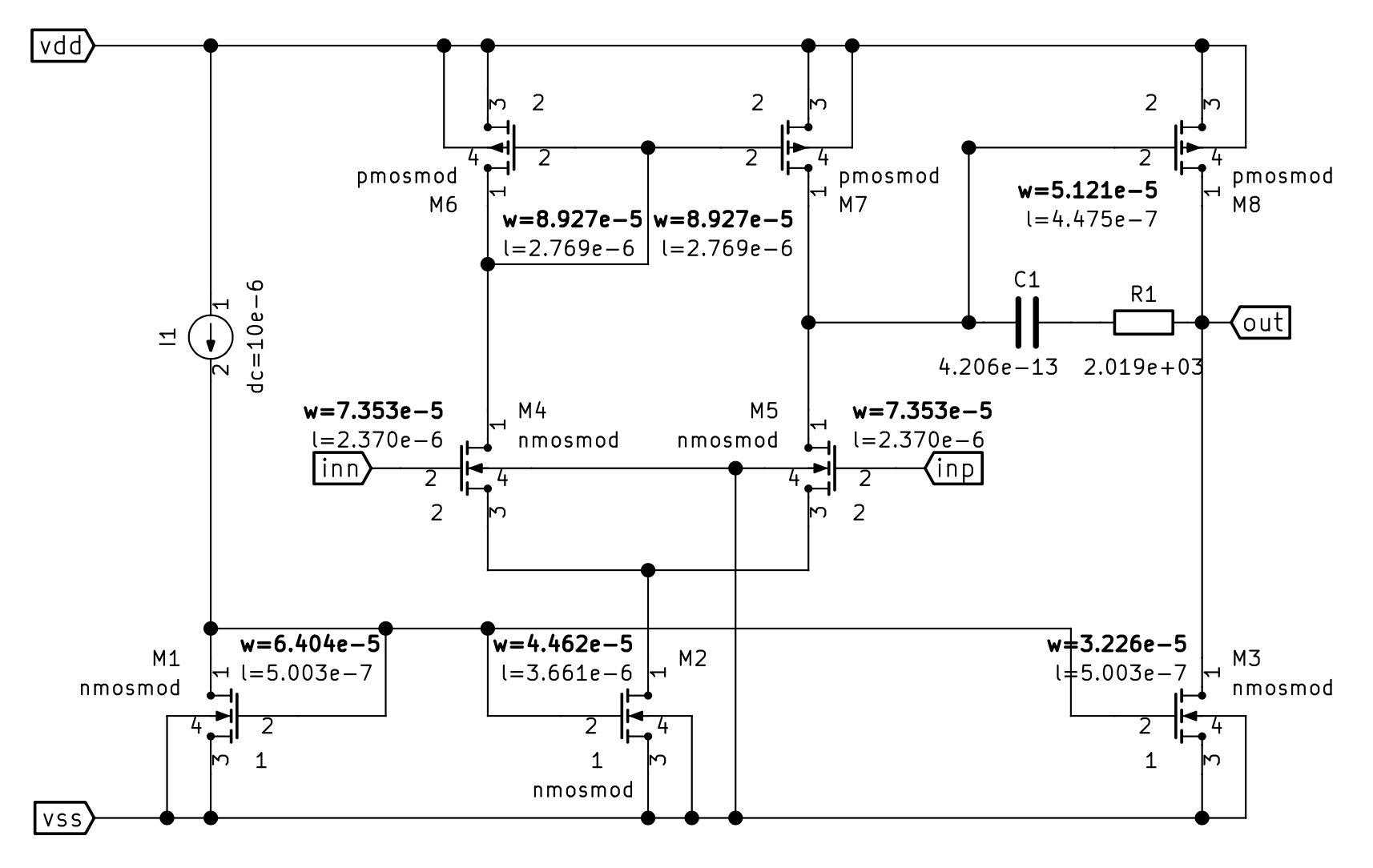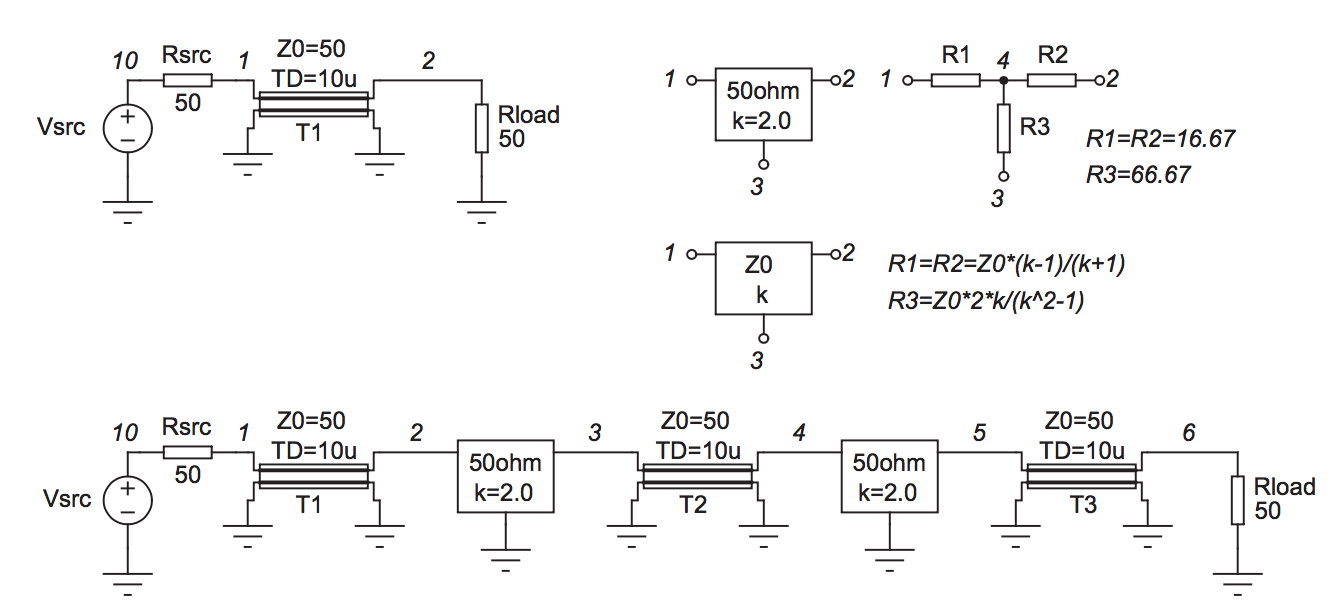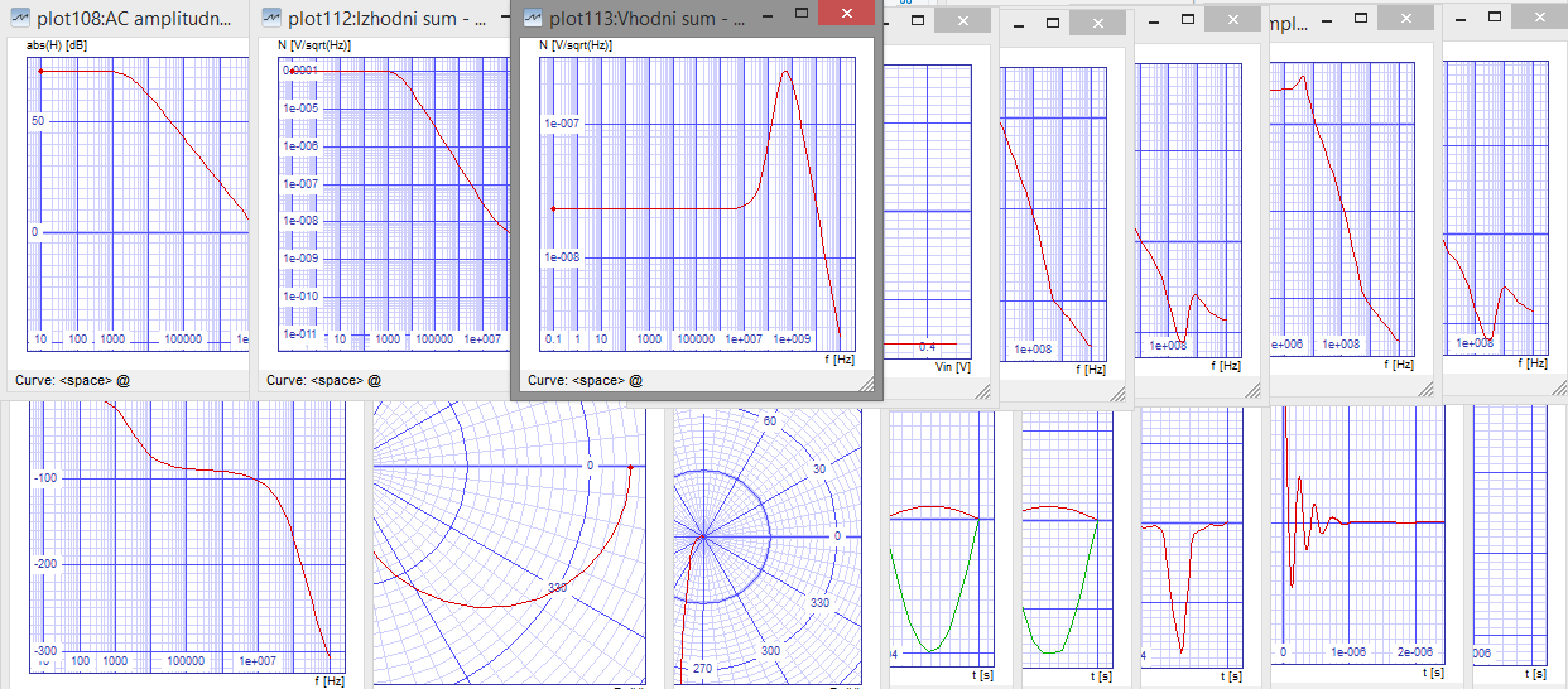Circuit Analysis and Optimization

Integrated MOS Amplifier
1st Laboratory Session (4 meetings) on April 7, 2014
Integrated MOS amplifiers are probably the most common and highly important devices in majority of analog- or mixed-signal integrated circuits. Wherever analog signals are in place, an OPAMP (OPerational AMPlifier) plays key rule in amplifying, filtering, and further signal processing. In this session, you will learn how to use SpiceOPUS to simulate the overall electrical behaviour of such circuit, including operating point, DC charasteristics (differential gain, common mode gain), AC charasteristics (gain, phase, bandwidth, margins), transient - time-domain characteristics and noise. As a professional analog circuit designer, you will probably use methods of this session on a regular basis.

Lines, Atennuators, Sub-circuits
2nd Laboratory Session on April 2, 2014
Mauris neque quam, fermentum ut nisl vitae, convallis maximus nisl. Sed mattis nunc id lorem euismod placerat. Vivamus porttitor magna enim, ac accumsan tortor cursus at. Phasellus sed ultricies mi non congue ullam corper. Praesent tincidunt sed
tellus ut rutrum. Sed vitae justo condimentum, porta lectus vitae, ultricies congue gravida diam non fringilla.
About the course
This is an intermediate level course about blablabla... This is a compulsory course in the 1. semester of the Master’s degree curriculum “Electronics”. The aim is to introduce students to the theoretical background of analog circuit simulation. The course also involves laboratory work in the advanced field of circuit simulation and optimization with SPICE OPUS.
Required knowledge
Basics of Electromagnetics Physics Mathematics I, II, III

